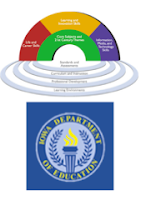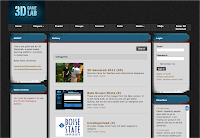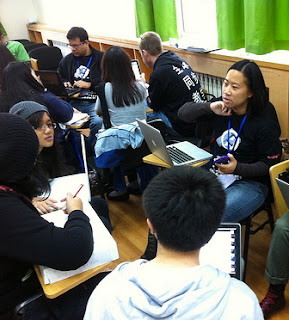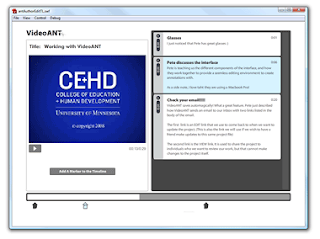Gaming isn't about merely playing games. It's about learning through creative problem solving, social interaction, diplomacy, collaboration, and critical thinking.
On Friday, December 9 at 1:00 PM GMT (7:00 AM Central Standard Time) the K-12 Online Conference will release a 20-minute presentation that I created on Gaming. (If you haven't seen it yet, you might want to read my previous post that explains how the K-12 Online Conference works.)
You can get to the video at Gaming to Learn by Learning to Game.
This slideshow can be found at SlideShare.com at Gaming to Learn
Here are the resources I used in the presentation:
The Fun Theory is an international project sponsored by Volkswagen to explore how play can be used to change behavior and induce learning in a positive manner.
Jane McGonigal - A game designer who is researching how gaming can make a difference in the world. She has a number of presentations that she has collected on her personal page.
World Without Oil is an alternate reality game that was held in 2007. The Video is quite informative about how they did it and what the results turned out to be.
Partnership for 21st Century Skills and Iowa Core Curriculum are two resources for identifying and promoting 21st Century skill development for our schools.
The 3D GameLab of Boise State University is the brainchild of Lisa Dawley and Chris Haskell. This is a system that they are developing which will provide educators with an interactive system for creating learning in a gaming environment.
On Friday, December 9 at 1:00 PM GMT (7:00 AM Central Standard Time) the K-12 Online Conference will release a 20-minute presentation that I created on Gaming. (If you haven't seen it yet, you might want to read my previous post that explains how the K-12 Online Conference works.)
You can get to the video at Gaming to Learn by Learning to Game.
This slideshow can be found at SlideShare.com at Gaming to Learn
Here are the resources I used in the presentation:
The Fun Theory is an international project sponsored by Volkswagen to explore how play can be used to change behavior and induce learning in a positive manner.
Jane McGonigal - A game designer who is researching how gaming can make a difference in the world. She has a number of presentations that she has collected on her personal page.
World Without Oil is an alternate reality game that was held in 2007. The Video is quite informative about how they did it and what the results turned out to be.
Partnership for 21st Century Skills and Iowa Core Curriculum are two resources for identifying and promoting 21st Century skill development for our schools.
The 3D GameLab of Boise State University is the brainchild of Lisa Dawley and Chris Haskell. This is a system that they are developing which will provide educators with an interactive system for creating learning in a gaming environment.





















